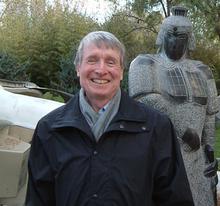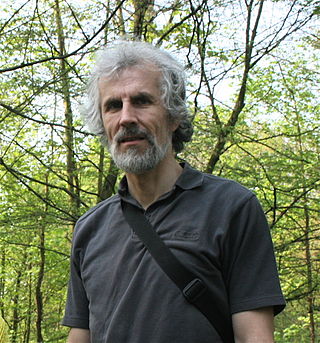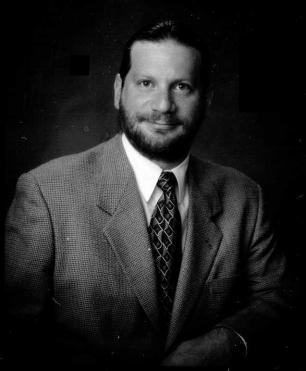Complexity characterises the behaviour of a system or model whose components interact in multiple ways and follow local rules, leading to non-linearity, randomness, collective dynamics, hierarchy, and emergence.
Artificial consciousness (AC), also known as machine consciousness (MC), synthetic consciousness or digital consciousness, is the consciousness hypothesized to be possible in artificial intelligence. It is also the corresponding field of study, which draws insights from philosophy of mind, philosophy of artificial intelligence, cognitive science and neuroscience. The same terminology can be used with the term "sentience" instead of "consciousness" when specifically designating phenomenal consciousness.

The term autopoiesis refers to a system capable of producing and maintaining itself by creating its own parts. The term was introduced in the 1972 publication Autopoiesis and Cognition: The Realization of the Living by Chilean biologists Humberto Maturana and Francisco Varela to define the self-maintaining chemistry of living cells.
Bio-inspired computing, short for biologically inspired computing, is a field of study which seeks to solve computer science problems using models of biology. It relates to connectionism, social behavior, and emergence. Within computer science, bio-inspired computing relates to artificial intelligence and machine learning. Bio-inspired computing is a major subset of natural computation.
Social simulation is a research field that applies computational methods to study issues in the social sciences. The issues explored include problems in computational law, psychology, organizational behavior, sociology, political science, economics, anthropology, geography, engineering, archaeology and linguistics.
Biosemiotics is a field of semiotics and biology that studies the prelinguistic meaning-making, biological interpretation processes, production of signs and codes and communication processes in the biological realm.

Computational sociology is a branch of sociology that uses computationally intensive methods to analyze and model social phenomena. Using computer simulations, artificial intelligence, complex statistical methods, and analytic approaches like social network analysis, computational sociology develops and tests theories of complex social processes through bottom-up modeling of social interactions.
An agent-based model (ABM) is a computational model for simulating the actions and interactions of autonomous agents in order to understand the behavior of a system and what governs its outcomes. It combines elements of game theory, complex systems, emergence, computational sociology, multi-agent systems, and evolutionary programming. Monte Carlo methods are used to understand the stochasticity of these models. Particularly within ecology, ABMs are also called individual-based models (IBMs). A review of recent literature on individual-based models, agent-based models, and multiagent systems shows that ABMs are used in many scientific domains including biology, ecology and social science. Agent-based modeling is related to, but distinct from, the concept of multi-agent systems or multi-agent simulation in that the goal of ABM is to search for explanatory insight into the collective behavior of agents obeying simple rules, typically in natural systems, rather than in designing agents or solving specific practical or engineering problems.

Generative science is an area of research that explores the natural world and its complex behaviours. It explores ways "to generate apparently unanticipated and infinite behaviour based on deterministic and finite rules and parameters reproducing or resembling the behavior of natural and social phenomena". By modelling such interactions, it can suggest that properties exist in the system that had not been noticed in the real world situation. An example field of study is how unintended consequences arise in social processes.
The expression computational intelligence (CI) usually refers to the ability of a computer to learn a specific task from data or experimental observation. Even though it is commonly considered a synonym of soft computing, there is still no commonly accepted definition of computational intelligence.
In artificial intelligence, artificial immune systems (AIS) are a class of computationally intelligent, rule-based machine learning systems inspired by the principles and processes of the vertebrate immune system. The algorithms are typically modeled after the immune system's characteristics of learning and memory for use in problem-solving.
A cognitive architecture refers to both a theory about the structure of the human mind and to a computational instantiation of such a theory used in the fields of artificial intelligence (AI) and computational cognitive science. The formalized models can be used to further refine a comprehensive theory of cognition and as a useful artificial intelligence program. Successful cognitive architectures include ACT-R and SOAR. The research on cognitive architectures as software instantiation of cognitive theories was initiated by Allen Newell in 1990.

John Henry Holland was an American scientist and professor of psychology and electrical engineering and computer science at the University of Michigan, Ann Arbor. He was a pioneer in what became known as genetic algorithms.

Francis Paul Heylighen is a Belgian cyberneticist investigating the emergence and evolution of intelligent organization. He presently works as a research professor at the Vrije Universiteit Brussel, where he directs the transdisciplinary "Center Leo Apostel" and the research group on "Evolution, Complexity and Cognition". He is best known for his work on the Principia Cybernetica Project, his model of the Internet as a global brain, and his contributions to the theories of memetics and self-organization. He is also known, albeit to a lesser extent, for his work on gifted people and their problems.
The Calouste Gulbenkian Foundation, commonly referred to simply as the Gulbenkian Foundation, is a Portuguese institution dedicated to the promotion of the arts, philanthropy, science, and education. One of the wealthiest charitable foundations in the world, the Gulbenkian Foundation was founded on 18 July 1956 according to the last will and testament of Calouste Sarkis Gulbenkian, a Portugal-based oil magnate who bequeathed his assets to the country in the form of a foundation.

The Instituto Gulbenkian de Ciência (IGC) is an international centre for biological and biomedical research and graduate training based in Oeiras, Portugal. Founded by the Calouste Gulbenkian Foundation (FCG) in 1961, and still supported by the Foundation, the IGC is organised in small independent research groups that work in an environment designed to encourage interactions with minimal hierarchical structure.
Computer simulation is a prominent method in organizational studies and strategic management. While there are many uses for computer simulation, most academics in the fields of strategic management and organizational studies have used computer simulation to understand how organizations or firms operate. More recently, however, researchers have also started to apply computer simulation to understand organizational behaviour at a more micro-level, focusing on individual and interpersonal cognition and behavior such as team working.

Lawrence E. Hunter is a Professor and Director of the Center for Computational Pharmacology and of the Computational Bioscience Program at the University of Colorado School of Medicine and Professor of Computer Science at the University of Colorado Boulder. He is an internationally known scholar, focused on computational biology, knowledge-driven extraction of information from the primary biomedical literature, the semantic integration of knowledge resources in molecular biology, and the use of knowledge in the analysis of high-throughput data, as well as for his foundational work in computational biology, which led to the genesis of the major professional organization in the field and two international conferences.
The internal measurement refers to the quantum measurement realized by the endo-observer. Quantum measurement represents the action of a measuring device on the measured system. When the measuring device is a part of measured system, the measurement proceeds internally in relation to the whole system. This theory was introduced by Koichiro Matsuno and developed by Yukio-Pegio Gunji. They further expanded the original ideas of Robert Rosen and Howard Pattee on the quantum measurement in living systems viewed as natural internal observers that belong to the same scale of the observed objects. According to Matsuno, the internal measurement is accompanied by the redistribution of probabilities that leave them entangled in accordance with the many-worlds interpretation of quantum mechanics by Everett. However, this form of quantum entanglement does not survive in the external measurement in which the mapping to real numbers takes place and the result is revealed in the classical time-space as the Copenhagen interpretation suggests. This means that the internal measurement concept unifies the alternative interpretations of quantum mechanics.

Howard Hunt Pattee is an American biologist, Professor Emeritus at Binghamton University and Fellow of the American Association for the Advancement of Science. He graduated at Stanford University in 1948 and completed a Ph.D. there in 1953.








